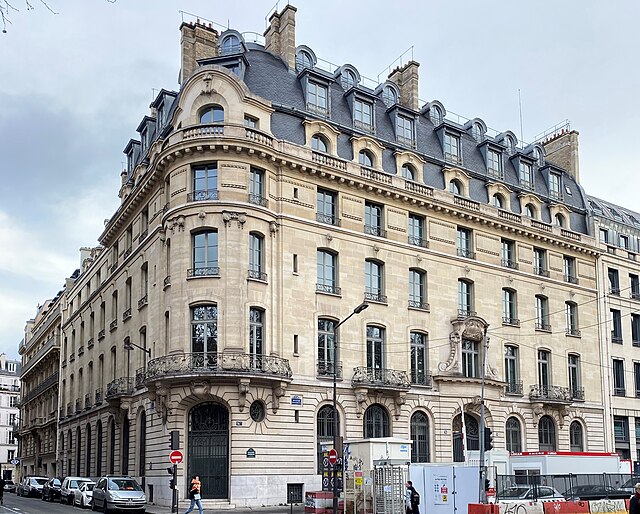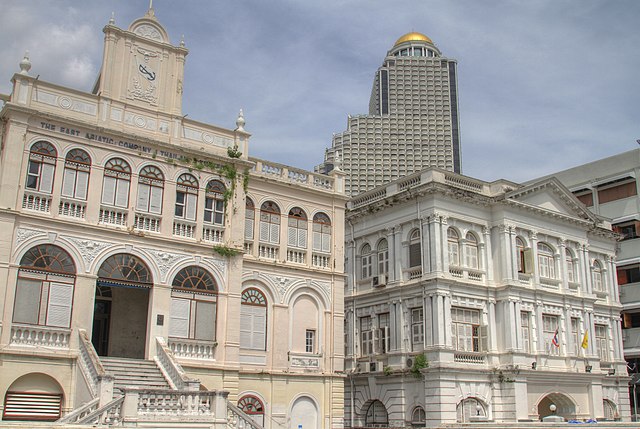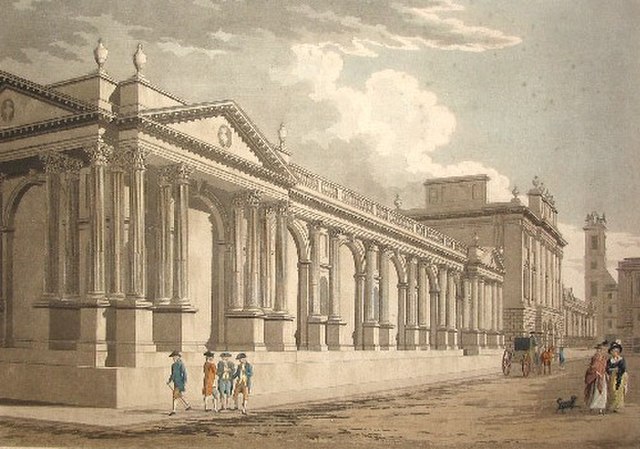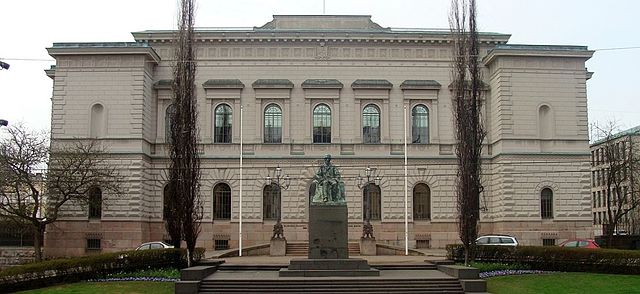The Banque de l'Indochine, originally Banque de l'Indo-Chine, was a bank created in 1875 in Paris to finance French colonial development in Asia. As a bank of issue in Indochina until 1952, with many features of a central bank, it played a major role in the financial history of French Indochina, French India, New Caledonia, French Polynesia, and Djibouti, as well as French-backed ventures in China and Siam. After World War II, it lost its issuance privilege but reinvented itself as an investment bank in France, and developed new ventures in other countries, such as Saudi Arabia and South Africa.
Headquarters building in Paris (completed 1922), 96 boulevard Haussmann
Office in Hankou (completed 1902), now part of Wuhan
Branch building in Bangkok (completed 1908, right)
Office in Tianjin (completed 1908)
A central bank, reserve bank, national bank, or monetary authority is an institution that manages the currency and monetary policy of a country or monetary union. In contrast to a commercial bank, a central bank possesses a monopoly on increasing the monetary base. Many central banks also have supervisory or regulatory powers to ensure the stability of commercial banks in their jurisdiction, to prevent bank runs, and in some cases also to enforce policies on financial consumer protection and against bank fraud, money laundering, or terrorism financing.
Walter Bagehot, influential 19th-century theorist of the economic role of central banks
Interior of the Llotja de Barcelona where the city's Taula de canvi was operated
The Bank of England in 1791
The Bank of Finland in Helsinki








